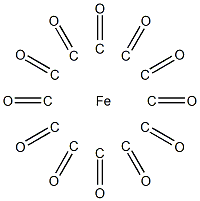F431522
Hexacarbonylchromium , 99 , 13007-92-6
Synonym(s):
Chromium(0) hexacarbonyl;Chromium carbonyl;Hexacarbonylchromium;Hexacarbonylchromium(0);Chromiumcarbonyl
CAS NO.:13007-92-6
Empirical Formula: 6CO.Cr
Molecular Weight: 220.06
MDL number: MFCD00010945
EINECS: 235-852-4
| Pack Size | Price | Stock | Quantity |
| 1g | RMB318.40 | In Stock |
|
| 10g | RMB2052.00 | In Stock |
|
| 50g | RMB9628.80 | In Stock |
|
| others | Enquire |
Update time: 2022-07-08
PRODUCT Properties
| Melting point: | >150 °C (dec.) (lit.) |
| Boiling point: | 220 °C |
| Density | 1.77 g/mL at 25 °C (lit.) |
| vapor density | 7.6 (vs air) |
| vapor pressure | 1 mm Hg ( 36 °C) |
| storage temp. | Store below +30°C. |
| solubility | insoluble in H2O, ethanol; soluble in ethyl ether,chloroform |
| form | Crystals |
| Specific Gravity | 1.77 |
| color | White |
| Water Solubility | insoluble |
| Sensitive | Light Sensitive/Heat Sensitive |
| Merck | 13,2253 |
| Exposure limits | TLV-TWA: 0.05 mg (Cr)/m3, confirmed
human carcinogen (ACGIH) PEL: 0.1 mg (CrO3)/m3 (ceiling) (OSHA). |
| Stability: | Stable. Incompatible with strong oxidizing agents. |
| CAS DataBase Reference | 13007-92-6(CAS DataBase Reference) |
| NIST Chemistry Reference | Chromium hexacarbonyl(13007-92-6) |
| EPA Substance Registry System | Chromium hexacarbonyl (13007-92-6) |
Description and Uses
Chromium carbonyl is a colorless crystallinesubstance which sinters (forms a coherent mass withoutmelting) at 90℃. Molecular weight =220.06; Freezing/Melting point =110℃ (decomposes). Boilingpoint 5 explodes (in lieu of boiling) at 210℃. HazardIdentification (based on NFPA-704 M Rating System):Health 2, Flammability 1, Reactivity 0. Insoluble in water;possible reaction.
It is used as a catalyst for polymerization andisomerization of olefins. It is also used as anadditive to gasoline, to increase the octanenumber.
Safety
| Symbol(GHS) |  GHS06 |
| Signal word | Danger |
| Hazard statements | H301 |
| Precautionary statements | P264-P270-P301+P310-P405-P501 |
| Hazard Codes | T,N,Xn |
| Risk Statements | 22-50/53-49-44-43-20/21/22-5 |
| Safety Statements | 53-36-45-61-60-36/37 |
| RIDADR | UN 3466 6.1/PG 3 |
| WGK Germany | 3 |
| RTECS | GB5075000 |
| TSCA | Yes |
| HazardClass | 6.1 |
| PackingGroup | II |
| HS Code | 29310095 |
| Toxicity | LD50 i.v. in mice: 100 mg/kg (Strohmeier) |





